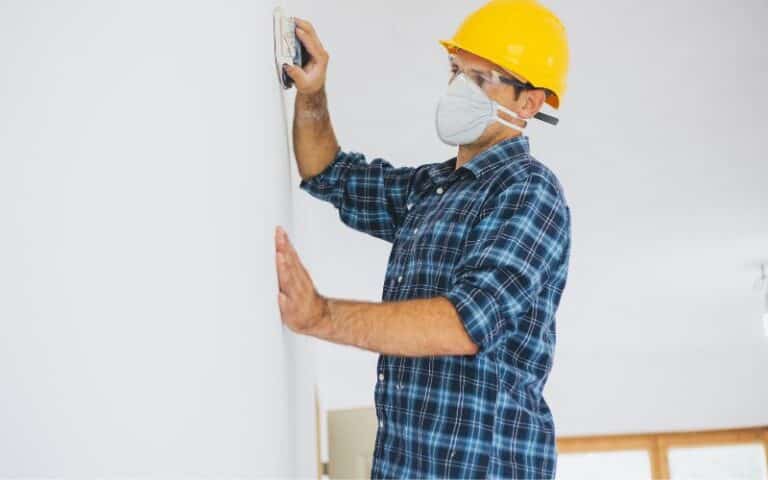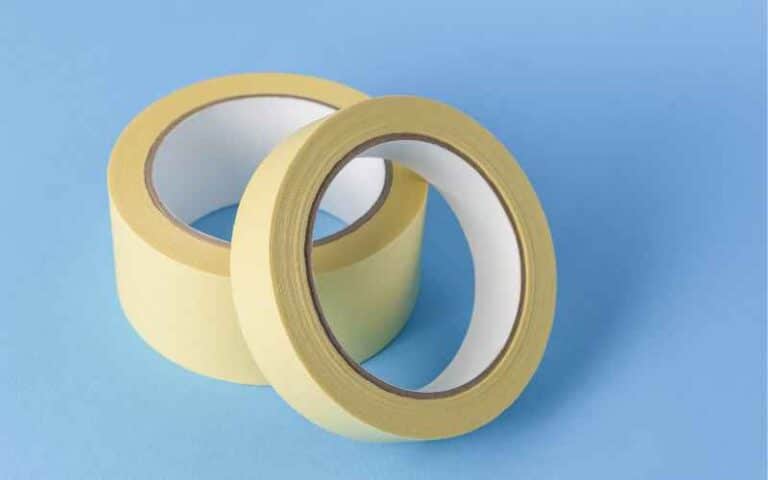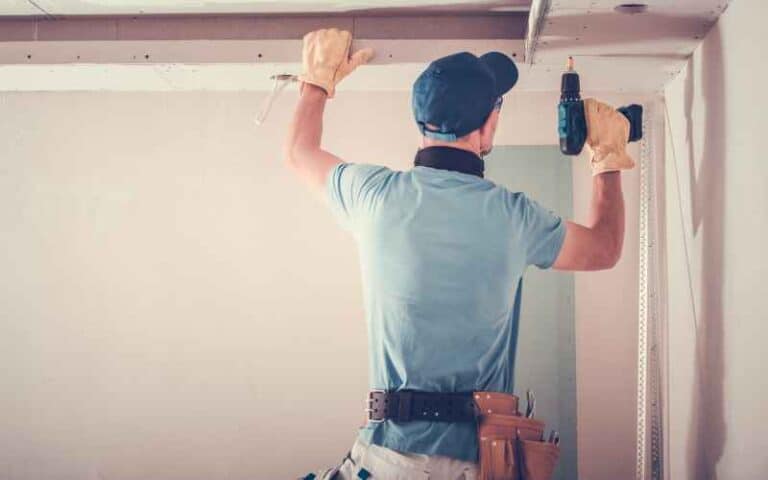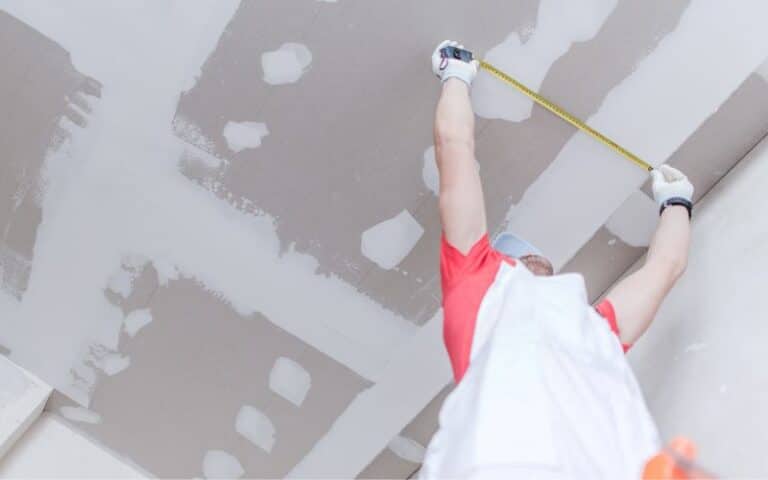Drywall is one top-notch quality material that serves many important interior walls finishing, insulations, and decorations.
It is affordable, durable, resilient, and has good resistance to fire. Little wonder its prominent use.
However, there’s usually the problem of properly and correctly hanging drywall boards. Should it be hung vertically or horizontally?
Whichever the case is, both methods of installation come with their downsides. What, then, are the pros and cons of hanging drywall vertically?
For starters, drywall boards are light-weighted, so the installation process is much faster when hung vertically. Also, the vertical way of hanging drywall is the best fit for commercial buildings as it gives easy access to areas needing inspection. On the contrary, the vertical drywall installation method makes it difficult to cover up dangling wires.
Whether you decide to hang a drywall board horizontally or vertically, it is imperative to note that each orientation has its benefits and drawbacks.
Keep reading to know the right way to hang drywall boards. In addition, you’ll get to know the pros and cons of hanging drywall vertically. Let’s go!
Ready for a Drywall Quiz?
What Is the Right Way to Hang Drywall?
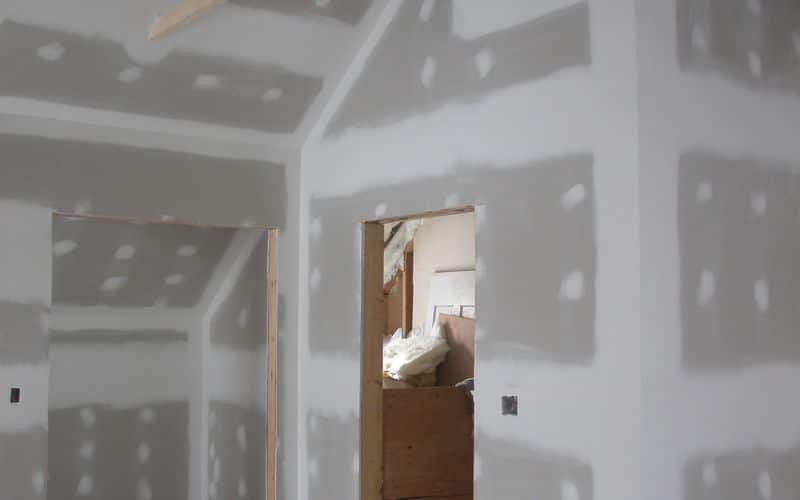
The general rule with hanging drywall boards is that, for commercial buildings, vertical orientation is your bet. Whereas for residential, the right way is to hang the drywall horizontally.
From the above rule, you’ll agree that the correct way of hanging drywall largely depends on the type of building in view.
In the case of commercial buildings, hanging the drywall boards vertically is best as it allows for easy access to the walls.
You can easily lift and remove vertically hung drywall boards when you need to access some areas for inspection.
Also, you can easily replace a vertically oriented drywall panel without moving another panel out of its way.
Furthermore, hanging drywall vertically finds common use in long edges running from floorings to ceilings.
Vertically oriented drywall board is popular for hallways, staircases, and accent walls as it helps create the illusion of height. It is best to hang drywall vertically in all such cases.
On the contrary, drywall would be best hung horizontally for residential buildings. The simple reason is that hanging drywall horizontally helps increase the shear strength of the building.
The shear strength of a building is the ability of the building to resist lateral loads, such as wind.
The horizontal installation of drywall boards reduces the likelihood of residential wall sagging, which prevents collapse to a great degree.
In addition, since residential buildings are more open-spaced, hanging the drywall horizontally is best, with the long edges running as the width.
For residential buildings with open space, horizontally hanging the drywall board is seamless and much more efficient.
Nevertheless, while considering the above rule, another important factor is how best the style looks to you.
Can I Hang Drywall Vertically?
Certainly, you can hang your drywall board vertically, although best under certain conditions. So, in hanging drywall vertically, there’re a few considerations to mark off the checklist.
Drywall is a good choice of material for finishing a large surface area. As such, you can hang the drywall board vertically to cover up the surface area.
But, the first thing to note is that the style of installing drywall boards, whether vertically or horizontally, depends on the building.
While you can install drywall boards using both ways, each serves best per the type of building structure.
Most of the time, hanging drywall vertically is best for commercial buildings as it has many benefits.
As you already know, commercial structures are usually tall. Therefore, it is only wise to fit the drywall boards vertically. By doing so, you get to cover up the height of the building easily.
Also, the vertical installation of drywall improves the safety of commercial structures.
In emergencies such as fire outbreaks, the vertical installation allows the panels to fall vertically from the hazard zone.
However, it is worth noting that hanging drywall vertically requires much effort and, often, more sheets for cutting and fitting.
Fitting drywall boards vertically often requires effort and skill to maneuver the panels to fit certain angles.
Pros and Cons Of Hanging Drywall Vertically
Drywall panel board is quite a fantastic construction material for finishing and decoration.
However, installing drywall boards vertically rather than horizontally has advantages and disadvantages.
For instance, vertical installation of drywall makes for faster installation. Handling full 4×8 drywall panel sheets vertically is much easier than horizontally.
Also, with the vertical orientation of the board, you’ll have half the number of joints to seal, sand, and mud. The case is especially easy when the full sheets are running from floor to ceiling.
And fewer seams and joints mean fewer chances of cracks appearing during the installation process.
However, as mentioned earlier, installing a drywall board has a few disadvantages.
One of the major drawbacks of installing drywall vertically is that it requires a great degree of experience and skill for proper wall bracing.
The vertical orientation of the drywall board requires extra installation effort to produce adequate support.
For this reason, it is common to see vertically installed drywall boards with reinforcement so they can provide support to the wall lateral loads.
The table below shows the pros and cons of hanging drywall vertically instead of horizontally.
| Pros | Pros |
|---|---|
| Serves best for commercial use. | It is more tasking. |
| It is easy to install, saving strength and time. | Often requires wall bracing and reinforcements. |
| Requires less cutting for fitting. | This pattern is prone to cracking under heavy weight. |
| Fewer seams mean less labor and material use. | Vertical installation requires extra work. |
| It is more economical for maintenance. | Costs more than horizontal orientation during installation. |
| Easy for lengthy fittings such as ceilings and hallways. | Reduced efficiency as compared to horizontal orientation. |
Is Hanging Drywall Vertically More Economical?
On the one hand, hanging drywall vertically may be more economical under certain conditions than hanging it horizontally. However, the case is not always so.
A few factors affect the cost of vertically hanging drywall boards. The major factor is the type of structure in view.
Generally, hanging drywall boards is more economical in commercial buildings than hanging them horizontally.
The vertical orientation of drywall boards makes for fewer joints. With the drywall panels running from the floor to the ceiling, you have only a straight joint to seal.
So, the overall number of joints to seal is approximately half the joints for horizontal orientation, reducing the cost of abrasive materials.
Also, there are better chances of having fewer leftover pieces of drywall which is a plus for vertically hanging the drywall board.
However, considering other factors, the vertical orientation is arguably more costly than the horizontal orientation.
As mentioned, hanging drywall vertically requires much more effort and demands extra work.
Sometimes, you may need a drywall lift to raise the sheets to ceiling height before installing.
In like manner, additional bracing is the case with vertical orientation, as you need to secure the top edges.
There is the drywall jack you may require to support the bottom of the drywall sheet for better finishing.
However, in the end, while hanging drywall horizontally seems more straightforward and economical than vertical orientation, the determining factors vary.
Does Hanging Drywall Vertically Improve Its Efficiency?
Yes, hanging drywall vertically improves work efficiency to a large degree. If you want a sleek wall without the look of patchwork, the vertical orientation of drywall is the way to go.
And for a more custom look and lasting result for your interior wall finishing, the vertical orientation is a superior choice.
There is material efficiency with hanging drywall vertically. You will tend to use fewer materials for covering the same wall space saving you time and resources.
In like manner, vertical orientation makes for less cutting of the drywall board to fit the height of your structure.
Also, installing drywall boards vertically instead of horizontally means fewer seams in your wall, which leads to a smoother finish.
With the horizontal orientation, you will have a seam after every 4 feet where the drywall panels meet.
Whereas for vertical orientation, the seams appear after 8-12 feet, depending on the drywall height.
The implication is that fewer seams mean slimmer chances of cracks appearing and less joint compound for sealing.
With the vertical orientation of drywall sheets, you’ll have a clean, streamlined appearance that avoids the cracking and popping of horizontal seams.
As such, hanging drywall boards vertically proves more efficient than hanging the drywall sheets horizontally.
Finally, when you get the vertical orientation of your drywall board correctly, you can be sure of its durability for years to come.

